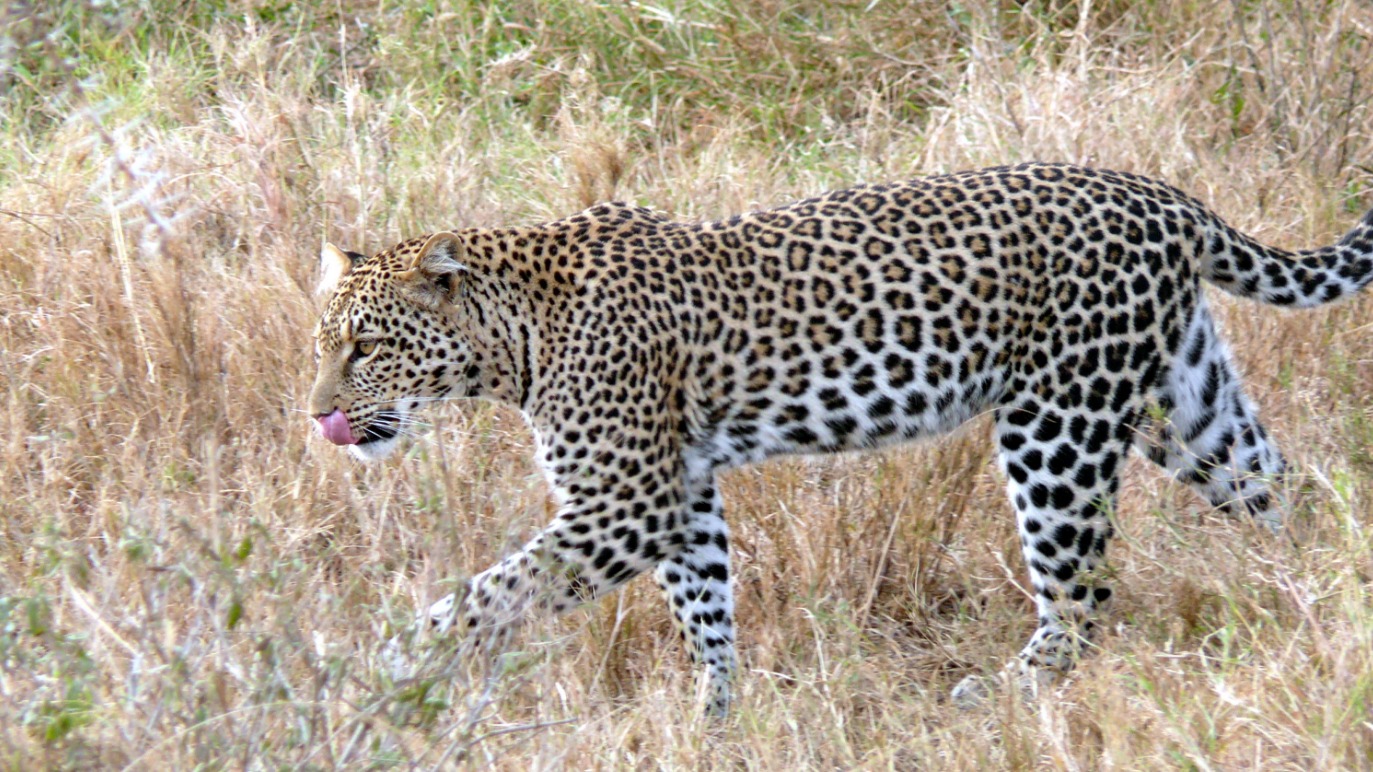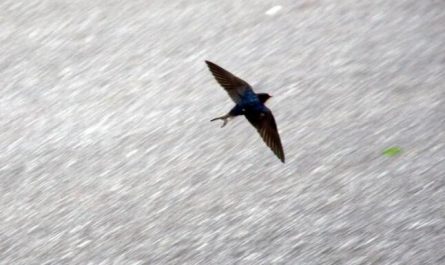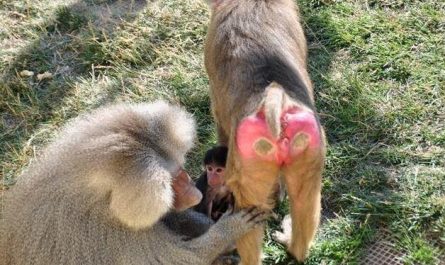Leopard, a large cat that is widely distributed on two continents in Asia and Africa. In the 1990s, molecular genetics researchers tested the mitochondrial genes of leopards from various places, and divided the leopards into 9 subspecies: 1 in Africa—African Leopard, 8 in Asia—Persian Leopard, Arabian Leopard, Cheetah, Ceylon Leopard, Java Leopard, Indochinese Leopard, North China Leopard, Far Eastern Leopard. Based on both molecular and fossil evidence, scholars believe that the leopard originated in Africa and then spread to Asia.
Classic 9 subspecies of leopard
However, mitochondrial genes can only represent the maternal lineage of the leopard, and ignore the equally important paternal lineage, so it may not be reliable. In 2021, several experts from the University of Potsdam in Germany sequenced the whole genome of leopards from 26 places in the world, and obtained more accurate results. This result prompted us to re-examine the origin, evolution and subspecies classification of leopards.
Leopard or should be split into two
According to the results of whole-genome sequencing, modern leopards are clearly divided into two branches-African leopards and Asian leopards. The two have diverged between 500,000 and 600,000 years ago, and there has been no large-scale hybridization after the divergence.
African leopard
The differentiation time of 500,000 to 600,000 years is a bit too long for a single species. Polar bears and brown bears have only been separated for about 400,000 years and are recognized as two species. The modern lion and the maneless lion (a cave lion) have been separated for about 480,000 years. The relationship between the Asian leopard and the African leopard is actually even more distant than the modern lion and the maneless lion. Therefore, it is very likely that the leopard will be split into two species, the African leopard and the Asian leopard.
The genetic structure of two leopards
From the results of whole-genome sequencing, the genetic structure of African leopards and Asian leopards are completely different. The African leopard is characterized by high genetic diversity but low differentiation. According to testing, African leopards are the largest cats with the highest genetic diversity, far surpassing Asian leopards, lions, tigers, mountain lions, cheetahs and lynxes, and are about the same as the small leopard cats in eastern Asia.
Comparison of genetic diversity between leopard and other cats
The Asian leopard is just the opposite. Its genetic structure is characterized by low diversity, high differentiation, and obvious isolation and differentiation among various groups. There are several reasons for this difference:
① The leopard originated in Africa. The Asian leopard is the descendant of a small number of individuals who migrated from Africa, and its initial genetic diversity is relatively low.
②The environment of the African continent is relatively integrated, and leopards can adapt to a variety of habitats such as forests and grasslands. Leopards across Africa can freely carry out gene exchanges, so that high levels of genetic diversity can always be maintained, and at the same time reduce the number of populations. The degree of differentiation. The opposite is true in Asia. There are some geographic barriers between regions (for example, there is the Himalayas between East Asia and South Asia). The various groups evolve separately, so the degree of differentiation is relatively high. At the same time, the diversity of the various groups is relatively high. low.
Far Eastern Leopard
Although the research supports that the leopard is divided into two distinct branches, Africa and Asia, it also found two more special populations-the Persian leopard (Anatolian leopard) and the Barbary leopard.
The Persian leopard lives in the northern part of West Asia. The average adult male weighs 67 kilograms and can reach up to 90 kilograms. It is the largest existing leopard subspecies. Gene sequencing of Persian leopards in the two places revealed that although they belong to Asian leopards as a whole, their genomes contain a small amount of African leopard genes. Persian leopard in Palestine = 75% Asian leopard + 25% African leopard, Persian leopard in Afghanistan = 90% Asian leopard + 10% African leopard.
The proportion of leopards in different places
Scholars have discovered that although African leopards and Asian leopards have not had large-scale hybridization since they diverged from 500,000 to 600,000 years ago, small-scale infiltrations have occurred in the last 100,000 years. The Persian leopard genome contains a small amount of African leopard components. Traces of secondary penetration.
The Barbary Leopard lives in Northwest Africa north of the Sahara Desert. Although the Barbary leopard’s genome generally belongs to the African leopard, 14% of the genes indicate that it is closer to the Asian leopard, and 7% of the genes are farther from the modern leopard. This result shows that the Asian leopards of that year migrated from Northwest Africa, and Northwest Africa is likely to be the true birthplace of modern leopards, rather than East Africa as indicated by the fossil record.
Barbary Leopard Specimen
Revisiting the subspecies of leopard
The new gene sequencing results are released, and it is still extremely accurate whole-genome sequencing, but the academic community did not immediately revise the leopard subspecies. The main reason is that there is still a missing link in this research-the Arabian leopard. Based on this research, I will first review the recognized subspecies in the past based on my molecular and taxonomic knowledge, for your reference only.
The “gene tree” of the leopard, the letters represent the classic subspecies: TUL-Anatolian Leopard=Persian Leopard, FUS-Cheetah Leopard, KOT-Ceylon Leopard, MEL-Java Leopard, ORI-Far East Leopard (including North China Leopard) ), DEL-Indochinese leopard, PAR-African leopard; “Gene Tree” shows that modern leopards are divided into two major evolutionary branches, African leopards and Asian leopards, which can be further subdivided into 6 monophyletic groups with higher differentiation. From top to bottom, there are Persian leopards, South Asian leopards, Java leopards, East Asian leopards, Barbary leopards, and African leopards.
1. Africa
Research in the 1990s regarded the African leopard as a unified subspecies, which coincides with the current research finding that although the African leopard is highly diverse, it has a low degree of differentiation.
From the “gene tree” point of view, African leopards have also undergone many differentiations, and the differentiation node is earlier than the subspecies of Asian leopards. However, the genetic diversity among various groups of African leopards is extremely low (generally less than 10%), which shows that although African leopards have differentiated in history, they later merged due to hybridization.
The Barbary leopard is more special. It has been separated from other African leopards very early, and the degree of differentiation is still relatively high (37%), indicating that the degree of heterozygousness between the Barbary leopard and other African leopards is not very high. This may It is related to the expansion of the Sahara Desert 50,000 to 70,000 years ago.
For African leopards, either maintain a single subspecies classification, or separate another Barbary leopard.
African leopard
2. West Asia
The differentiation between Asian leopards and African leopards is close to 100%, while the differentiation between Persian leopards and other Asian leopards has reached 99%. Coupled with the unique African leopard genes in its genome, the Persian leopard is quite unique among Asian leopards. Its subspecies status should be recognized.
The study has not sequenced the genome of the Arabian leopard, and it is impossible to talk about whether this subspecies will survive or not. Inferred from geographical location, the Arabian leopard’s genome is likely to contain more African leopard components than the Persian leopard. The future sequencing results of the Arabian leopard will not only affect the survival of this subspecies, but also the separation and integration of the Asian and African leopards.
Persian Leopard
3.South Asia
Mitochondrial results show that the leopards of the South Asian subcontinent and Sri Lanka are separated in maternal lineage. Therefore, in the past, experts classified the former as the cheetah and the latter as the Ceylon leopard. But this time genome sequencing revealed that the leopards in Nepal-formerly classified as the cheetahs-are actually closer to the Ceylon leopards and more distant from the Indian leopards. This shows that the leopards of Sri Lanka and the South Asian subcontinent are not separated in the patrilineal line (this is because the male leopard has a strong proliferation ability), the Ceylon leopard cannot be established, and the two subspecies should be unified into a “South Asian leopard”.
The degree of differentiation between the South Asian leopard and the East Asian subspecies is relatively high (52%), and I personally believe that its subspecies status should be recognized.
Ceylon Leopard
4. East Asia
Mitochondrial results divided East Asia into 4 subspecies: Java, Indochina, North China and Far East. The genomic results also support these differentiations, but except for the Javanese leopard, the three mainland subspecies either have too low differentiation or the differentiation time is too short, and their subspecies status may not be recognized.
Foreign academic circles have always called for the cancellation of the North China Leopard, because there was no geographical separation between it and the Far Eastern Leopard in history. The results of “gene trees” constructed using different genes are different. Some “gene trees” show that the North China leopard is closer to the Far East leopard, while others show that it is closer to the Indochinese leopard, which also implies these three subspecies. It is the mutation of the gradient group, and the boundaries between each other are difficult to accurately delineate.
In summary, the 4 leopards in East Asia are either all merged, or the 3 leopards on the mainland are merged and the Java subspecies is retained.
Java Leopard
The origin and spread of the leopard: out of Africa
According to this genome sequencing and previous research, the origin and evolution of leopards have 4 important time points:
Node 1: In Africa more than 2 million years ago, the leopard parted ways with its closest relative, the lion.
Node 2: No earlier than 800,000 years ago, the latest common ancestor of modern leopards appeared in East Africa or Northwest Africa, and then spread to all parts of Africa.
? Node 3: 500,000 to 600,000 years ago, taking advantage of the decline in sea level during the ice age, a group of African leopards (possibly from Northwest Africa) entered Asia on the Asian-African land bridge, and spread to various parts of Asia and Europe in the following hundreds of thousands of years.
Node 4: 50,000 to 70,000 years ago, when the last ice age came, with the expansion of the Sahara Desert, the Barbary leopard gradually separated from other African leopards. At the same time, the Asian-African land bridge expanded again, and a small number of male African leopards (probably Barbary leopards) invaded West Asia and hybridized with local leopards. This expansion is in conjunction with modern people and modern lions, but on a much smaller scale, it is far less successful than humans and lions.
Leopard distribution today
Reassess the leopard’s spreading ability
Many people believe that the proliferation ability of leopards is far better than that of super-big cats such as lions and tigers. This study reconstructed the evolution process of leopards and gave us a new understanding of the proliferation ability of leopards.
In terms of the ability to cross the forest, the leopard is indeed far better than the lion. Lions cannot adapt to forests. The tropical rainforests of Central and West Africa have always been the biggest barriers for lion migration, which has also led to the division of modern lions into two branches, the north and the south. For leopards, the rainforest is not a problem at all. The leopards inside and outside the rainforest and on both sides are a subspecies.
Cheetah, widely distributed in the forests and grasslands of the South Asian subcontinent
But in terms of ability to migrate across continents, leopards are inferior to lions. Both the lion and the leopard originated in Africa. The lion has left Africa on a large scale at least three times in the history of evolution:
The first time was about 900,000 years ago, when primitive lions went out of Africa and entered Europe and Asia;
The second time was about 400,000 years ago, when the maneless lion came out of Africa. This time it not only occupied Europe and Asia, but also entered the New World and finally conquered the world.
The third time was about 30,000 years ago when the modern lion stepped out of Africa and entered West and South Asia, laying the foundation for the Asian lion today.
The leopard went out of Africa only once on a large scale (roughly corresponding to the second time for the lion), and it was far less effective than the lion. The leopard occupied the forests of South and East Asia, but failed to gain access to North Asia, and ultimately failed to enter North America.
Arabian Leopard
The reason may be that leopards are not as capable of adapting to open ground as lions. Both lions and leopards can adapt to the grasslands, while lions and leopards in pure deserts can’t. But in some semi-desert areas, lions can adapt, but leopards cannot adapt. The Asian-African land bridge (now the Suez Canal-Red Sea area) was probably mainly a desert or semi-desert environment and was the home ground of lions. Therefore, the spread of lions between Asia and Africa is much easier than leopards. In the new generation, the open land is the mainstream of the land. Whoever controls the open land will control the world.






